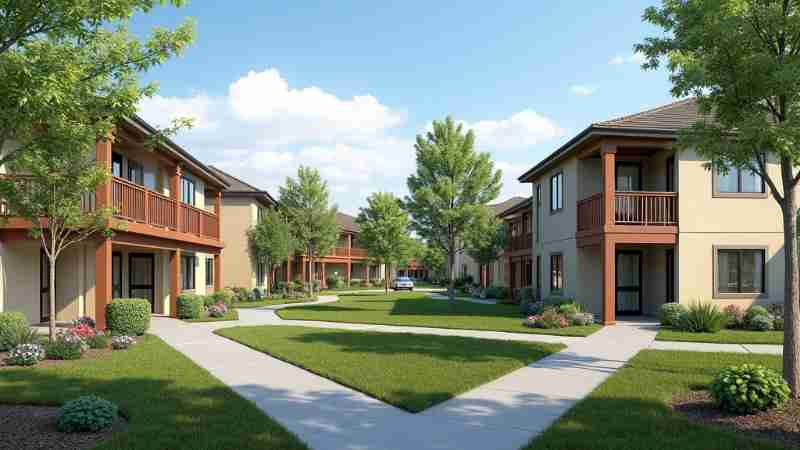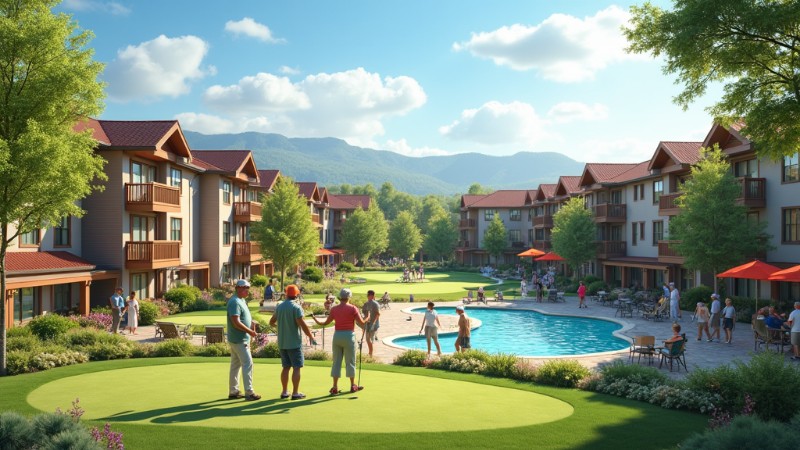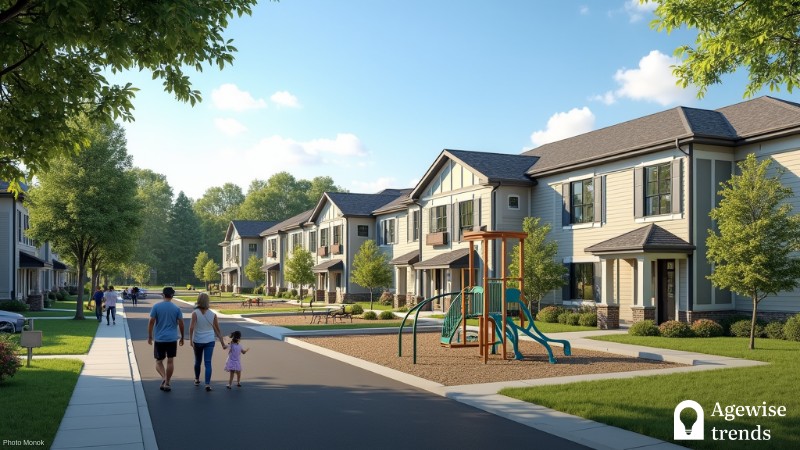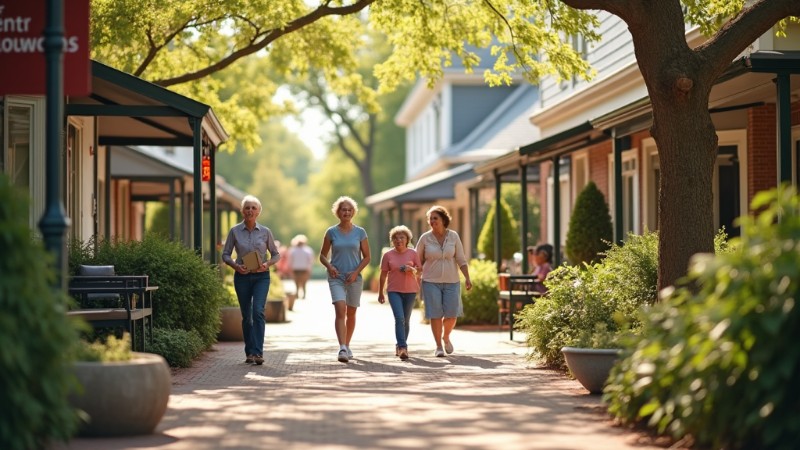Finding affordable housing has become a pressing concern for many older adults, particularly those on fixed incomes or facing rising living expenses. Seniors often struggle to maintain independence while managing the costs of daily life, especially housing.
To address this, various programs and housing developments are emerging to provide affordable, safe, and supportive living environments for elderly individuals. This guide explores the different housing options available for seniors, the resources that support these choices, and the future trends in senior housing development.
Key Takeaways
This guide explores various affordable housing options and government-backed initiatives designed to support elderly individuals facing rising living expenses.
- Seniors are one of the fastest-growing demographic groups, leading to increased demand for affordable housing solutions.
- Government programs such as Low-Income Housing Tax Credit (LIHTC) and HUD’s Housing Choice Vouchers provide financial assistance to low-income seniors.
- Emerging trends like intergenerational housing and smart home technology offer innovative ways to support independent living for the elderly.
The growing need for affordable housing
Seniors represent one of the fastest-growing demographic groups in the United States. According to the U.S. Census Bureau, by 2030, one in five Americans will be over the age of 65. This demographic shift is putting pressure on housing markets across the country, especially as many seniors live on fixed incomes or rely on limited savings for retirement.
The rising cost of living—particularly housing—has made it difficult for many older adults to remain in their homes. The increase in rent prices, healthcare costs, and everyday expenses means that seniors are often forced to make tough decisions about their living situations. For many, this includes considering affordable housing options.
To meet this growing need, both government agencies and private developers have stepped up efforts to provide affordable homes for seniors. These options not only cater to seniors’ financial needs but also take into account the need for safety, independence, and community support.
One such solution that addresses this growing crisis is senior affordable housing. These projects often offer low rent, subsidized living arrangements, and a sense of community for seniors who are struggling financially. This makes it easier for seniors to age in place without facing the uncertainty of rising housing costs.
Government-backed senior housing initiatives
One of the most effective ways to address housing for seniors is through government-backed initiatives. Various programs are available that provide rental assistance, subsidized housing, and housing for seniors with disabilities.
Low-income senior housing: State and federal programs
Government programs such as Low-Income Housing Tax Credit (LIHTC) provide financial incentives to developers to build low income senior homes. These programs ensure that rental units remain affordable, especially in high-demand urban areas. States like Washington and Illinois have programs specifically designed for seniors, offering supportive living options and adult family homes that integrate healthcare services with living arrangements.
The U.S. Department of Housing and Urban Development (HUD) also provides rental assistance through programs like Housing Choice Vouchers (Section 8), which helps low income elderly apartments renters pay for private homes and apartments. Seniors can pay up to 30% of their income towards rent, with the voucher covering the rest. This allows seniors to live independently while receiving government support.
For seniors facing affordability issues, low income housing for seniors based on income offers a particularly important solution. This system adjusts rent prices according to the senior’s income, ensuring that housing remains affordable even for those on fixed incomes or Social Security. This program is key for helping seniors manage living costs without sacrificing their well-being.
Local housing developments and projects
Cities and counties are taking steps to increase affordable housing for seniors. In San Diego, the Levant Senior Cottages project provides 120 affordable apartments for low-income seniors, with rents between $600 and $1,200 per month, based on income.
This $48.8 million development is part of a broader effort to repurpose underutilized land for low income housing for seniors. These projects help seniors age in place, offering proximity to essential services and communities. Levant also addresses housing for seniors based on income, offering affordable options for those on housing for seniors on social security or other fixed incomes.
Traditional housing: Foundation for senior living
For some seniors, traditional housing offers a cost-effective way to live independently while managing financial needs. These options may not provide as much care as retirement communities but can still be a practical solution.
Downsizing to a smaller, more affordable senior apartment is a common strategy. Moving from a larger home to a senior apartment affordable can lower rent and maintenance costs, with centrally located units near public transportation being especially attractive.
Many cities offer affordable rental listings for seniors, including those on fixed incomes. Some even provide rent subsidies based on income. Real estate agents who specialize in low income housing for seniors can help seniors find the best deals.
Cooperative housing: A growing trend
Cooperative housing is an affordable option gaining traction among seniors. Residents collectively own the property, share costs, and manage daily operations, leading to lower housing costs and a stronger sense of community. This model is especially beneficial for seniors seeking social interaction and shared responsibilities.
While still niche, cooperative housing is growing, particularly in areas with high demand for affordable independent living for seniors. Shared spaces like gardens and communal rooms encourage socializing and physical activity.
The role of respite and transitional care
Respite care: Respite care offers seniors short-term housing and support, providing relief for family caregivers. It’s especially beneficial during winter when seniors seek a break from harsh weather. These facilities offer medical care, social activities, and meals, similar to long-term care, but on a temporary basis.
Often located within retirement or assisted living communities, respite care allows seniors to experience communal living while having the option to transition to permanent care if needed.
Assisted living: Assisted Living for Seniors Low Income Communities offer support with daily activities such as bathing, dressing, and meal prep. These communities combine housing and personalized care, providing a balance of independence and assistance for seniors.
Costs vary based on location and care needs, but many communities offer financial aid and affordable options for those on fixed incomes. Seniors may also qualify for Medicaid or state subsidies to help reduce expenses.
New models of senior housing
The demand for senior housing is expected to grow as the Baby Boomer generation continues to age. As such, it is important to explore new models and housing solutions that can address the evolving needs of seniors.
Innovative housing projects and community-based solutions: Innovative projects like Levant Senior Cottages are setting the standard for affordable housing for seniors. Located in Linda Vista, this development showcases collaboration between local governments and developers to provide low income housing and integrate them into thriving communities.
Another emerging trend is intergenerational housing. This model pairs seniors with younger residents, such as students or professionals, in shared living spaces. It promotes mutual support, reduces isolation, and offers low income housing for seniors within mixed-income communities.
Technology and smart housing: Technology will play a crucial role in senior housing’s future. With smart home advancements, seniors can live independently longer, with automated systems for lighting, temperature control, and security ensuring safety. Additionally, telemedicine and remote healthcare services allow seniors to manage their health conveniently from home.
Affordable housing is a major concern for seniors, but several options and resources can help address this challenge. From HUD housing vouchers to cooperative housing, seniors can find affordable homes for seniors, including low income housing for seniors and disabled individuals. With developments like Levant Senior Cottages, senior affordable housing is expanding, offering more opportunities for seniors to live independently.
By exploring available resources, seniors and their families can make informed choices that meet both financial and personal needs.















